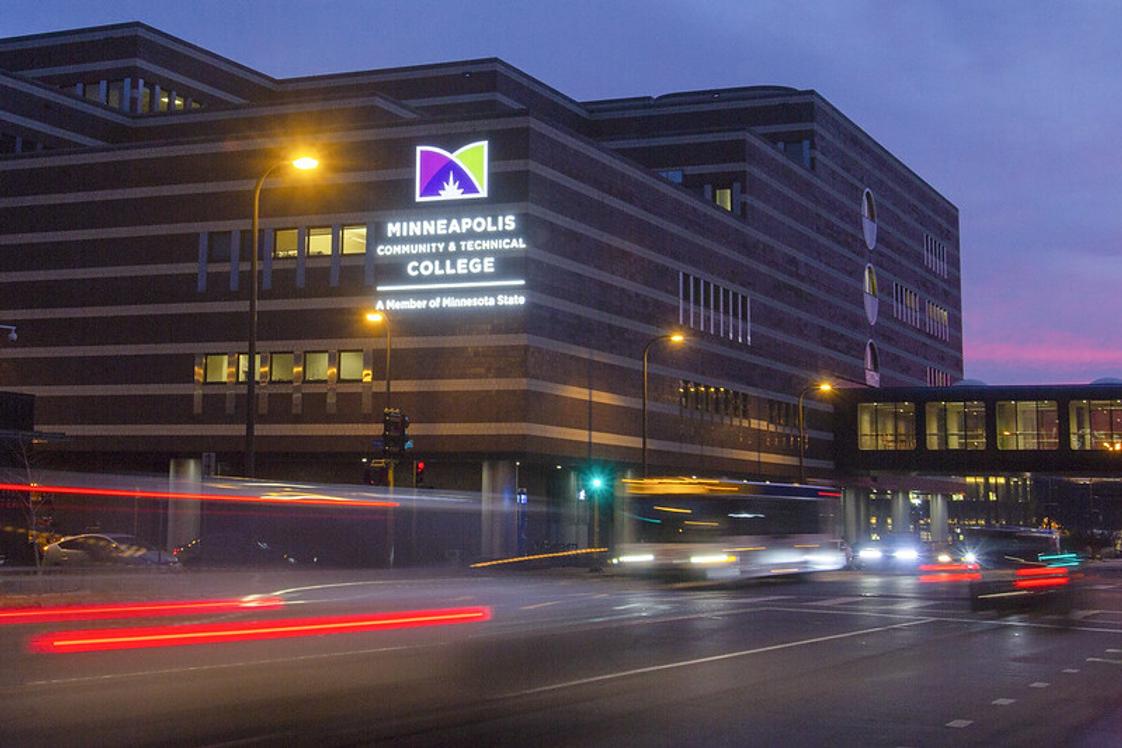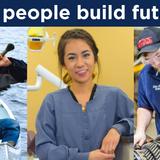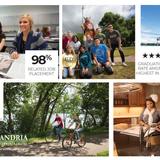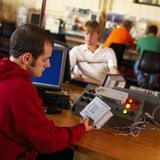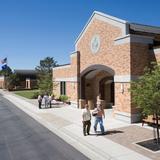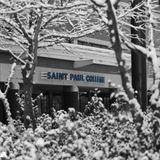For the 2025 school year, there are 47 community colleges serving 160,817 students in Minnesota (36 public colleges and 11 private colleges).
The average tuition for community colleges in Minnesota is approximately $5,489 per year for in-state students and $6,145 for out-of-state students. For private community colleges, the average yearly tuition is approximately $17,208 per year (view national tuition costs).
The top-ranked community colleges in California include Alexandria Technical & Community College, Bethany Lutheran College, and Itasca Community College.
The average community college acceptance rate in Minnesota is 89% (compared to national acceptance rates).
Minority enrollment is 42%, with the majority being Black or Hispanic and the student:teacher ratio is 22:1.
Student by Ethnicity
(MN) School Average
American Indian
1%
Asian
6%
Hispanic
8%
Black
15%
White
58%
Hawaiian
1%
Two or more races
4%
Non Resident
1%
Unknown
6%
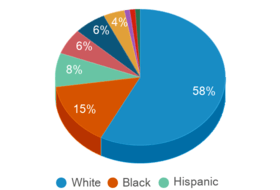
Top Ranked Minnesota Community Colleges (2025)
College
Location
Students
1601 Jefferson Streeet
Alexandria, MN 56308
(320) 762-0221
Alexandria, MN 56308
(320) 762-0221
| 4,228 students
Bethany Lutheran College![Bethany Lutheran College Photo - Bethany is part a member of the NCAA - Division III. Bethany Lutheran College Photo - Bethany is part a member of the NCAA - Division III.]()
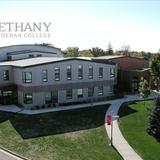
Private not-for-profit
700 Luther Dr
Mankato, MN 56001
(507) 344-7000
Mankato, MN 56001
(507) 344-7000
| 932 students
Itasca Community College
Public
1851 East Highway 169
Grand Rapids, MN 55744
(218) 322-2300
Grand Rapids, MN 55744
(218) 322-2300
| 1,058 students
1501 Highway 71
International Falls, MN 56649
(218) 285-7722
International Falls, MN 56649
(218) 285-7722
| 173 students
Academy College
Private for-profit
1600 W. 82nd Street, Suite 100
Bloomington, MN 55431
(952) 851-0066
Bloomington, MN 55431
(952) 851-0066
| 140 students
11200 Mississippi Blvd NW
Coon Rapids, MN 55433
(763) 433-1100
Coon Rapids, MN 55433
(763) 433-1100
| 10,430 students
Avalon School of Cosmetology
Private for-profit
1428 N McMillan St
Worthington, MN 56187
(507) 372-2344
Worthington, MN 56187
(507) 372-2344
| 18 students
501 West College Drive
Brainerd, MN 56401
(218) 855-8000
Brainerd, MN 56401
(218) 855-8000
| 5,825 students
1300 145th Street East
Rosemount, MN 55068
(651) 423-8301
Rosemount, MN 55068
(651) 423-8301
| 3,657 students
Dunwoody College of Technology![Dunwoody College of Technology Photo - Welding students in a Dunwoody classroom/workshop Dunwoody College of Technology Photo - Welding students in a Dunwoody classroom/workshop]()
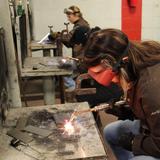
Private not-for-profit
818 Dunwoody Blvd
Minneapolis, MN 55403
(612) 374-5800
Minneapolis, MN 55403
(612) 374-5800
| 1,514 students
2101 14th St
Cloquet, MN 55720
(218) 879-0800
Cloquet, MN 55720
(218) 879-0800
| 1,525 students
Globe University-Minneapolis
Private, for profit
IDS Center, 80 South 8th Street, Suite 51
Minneapolis, MN 55402
(612) 455-3000
Minneapolis, MN 55402
(612) 455-3000
| 164 students
9000 Brooklyn Blvd
Brooklyn Park, MN 55445
(952) 995-1300
Brooklyn Park, MN 55445
(952) 995-1300
| 5,992 students
Herzing University-Minneapolis
Private not-for-profit
435 Ford Road
St. Louis Park, MN 55426
(763) 535-3000
St. Louis Park, MN 55426
(763) 535-3000
| 1,209 students
2500 80th St E
Inver Grove Heights, MN 55076
(651) 450-3000
Inver Grove Heights, MN 55076
(651) 450-3000
| 4,988 students
ITT Technical Institute-Eden Prairie
Private, for profit
7905 Golden Triangle Drive, Suite 100
Eden Prairie, MN 55344
(952) 914-5300
Eden Prairie, MN 55344
(952) 914-5300
| 216 students
6945 Littlewolf Road NW
Cass Lake, MN 56633
(218) 335-4200
Cass Lake, MN 56633
(218) 335-4200
| 156 students
1100 Industrial Park Drive
Eveleth, MN 55734
(218) 744-7506
Eveleth, MN 55734
(218) 744-7506
| 1,373 students
1501 Hennepin Ave
Minneapolis, MN 55403
(612) 659-6000
Minneapolis, MN 55403
(612) 659-6000
| 9,199 students
1414 College Way
Fergus Falls, MN 56537
(218) 736-1500
Fergus Falls, MN 56537
(218) 736-1500
| 6,556 students
900 hwy 34 e
Detroit Lakes, MN 56501
(218) 846-7444
Detroit Lakes, MN 56501
(218) 846-7444
| 0 students
1593 11th Ave
Granite Falls, MN 56241
(800) 658-2330
Granite Falls, MN 56241
(800) 658-2330
| 4,653 students
National American University-Rochester
Private for-profit
3906 East Frontage Road NW/Hwy 52
Rochester, MN 55901
(507) 286-1650
Rochester, MN 55901
(507) 286-1650
| 22 students
9700 France Ave S
Bloomington, MN 55431
(952) 358-8200
Bloomington, MN 55431
(952) 358-8200
| 13,957 students
7411 85th Ave N
Brooklyn Park, MN 55445
(763) 488-0391
Brooklyn Park, MN 55445
(763) 488-0391
| 7,120 students
1101 Hwy One East
Thief River Falls, MN 56701
(218) 793-2800
Thief River Falls, MN 56701
(218) 793-2800
| 3,275 students
905 Grant Avenue SE
Bemidji, MN 56601
(218) 333-6600
Bemidji, MN 56601
(218) 333-6600
| 1,297 students
Show 12 more community colleges in Minnesota (out of 47 total colleges)
Loading...
Community Colleges in Minnesota (Closed)
School
Location
Students
The Art Institutes International-Minnesota (Closed 2019)
Private, for profit
15 S 9th Street, LaSalle Building
Minneapolis, MN 55402
(612) 332-3361
Minneapolis, MN 55402
(612) 332-3361
| 932 students
Globe University-Woodbury (Closed 2024)
Private, for profit
8089 Globe Drive
Saint Paul, MN 55125
(651) 332-8000
Saint Paul, MN 55125
(651) 332-8000
| 776 students
Institute of Production and Recording (Closed 2024)
Private for-profit
300 North 1st Ave, Suite 100
Minneapolis, MN 55401
(612) 351-0631
Minneapolis, MN 55401
(612) 351-0631
| 133 students
Le Cordon Bleu College of Culinary Arts-Minneapolis (Closed 2024)
Private, for profit
1315 Mendota Heights Road
Saint Paul, MN 55120
(651) 675-4700
Saint Paul, MN 55120
(651) 675-4700
| 491 students
McNally Smith College of Music (Closed 2020)
Private, for profit
19 Exchange Street East
Saint Paul, MN 55101
(651) 291-0177
Saint Paul, MN 55101
(651) 291-0177
| 518 students
3680 Pheasant Ridge Dr NE
Minneapolis, MN 55449
(763) 225-8000
Minneapolis, MN 55449
(763) 225-8000
| 239 students
5910 Shingle Creek Pky
Minneapolis, MN 55430
(763) 566-7777
Minneapolis, MN 55430
(763) 566-7777
| 109 students
11500 193rd Ave NW
Elk River, MN 55330
(763) 367-7000
Elk River, MN 55330
(763) 367-7000
| 236 students
1455 County Rd 101 North
Minneapolis, MN 55447
(763) 476-2000
Minneapolis, MN 55447
(763) 476-2000
| 130 students
1401 W 76 St
Minneapolis, MN 55423
(612) 861-2000
Minneapolis, MN 55423
(612) 861-2000
| 763 students
2521 Pennington Drive NW
Rochester, MN 55901
(507) 536-9500
Rochester, MN 55901
(507) 536-9500
| 183 students
1201 2nd Street South
Waite Park, MN 56387
(320) 257-2000
Waite Park, MN 56387
(320) 257-2000
| 218 students
Sanford-Brown College-Mendota Heights (Closed 2024)
Private, for profit
1345 Mendota Heights Road
Saint Paul, MN 55120
(651) 905-3400
Saint Paul, MN 55120
(651) 905-3400
| 150 students
Frequently Asked Questions
How many community colleges are located in Minnesota?
There are 47 community colleges serving 160,817 students in Minnesota.
How much do community colleges cost in Minnesota?
The average tuition for community colleges in Minnesota is approximately $5,489 per year for in-state students and $6,145 for out-of-state students. For private community colleges, the average yearly tuition is approximately $17,208.
What are the top ranked community colleges in Minnesota?
The top-ranked community colleges in Minnesota include Alexandria Technical & Community College, Bethany Lutheran College, and Itasca Community College.
What is community college acceptance rate in Minnesota?
The average community college acceptance rate in Minnesota is 89% (compared to national acceptance rates).
What is community college diversity score in Minnesota?
Community colleges in Minnesota have a diversity score of 0.63, which is higher than the national average of 0.00 (compared to national diversity statistics).
How diverse are community college in Minnesota?
Community colleges in Minnesota have approximately 42% minority enrollment, with the majority being Black or Hispanic.
Recent Articles

Obtaining Your Bachelor's Degree at a Community College
Explore the evolving landscape of community colleges offering bachelor's degrees, addressing affordability, accessibility, and workforce needs.

A to Z of Community College Certificates and Courses
From business and healthcare to technology and skilled trades, the article showcases the breadth of options available to students seeking to enhance their knowledge, develop new skills, or pursue career advancement.

What is a Community College?
This comprehensive guide explains what a community college is, its history, and its role in higher education. It covers the types of programs offered, differences from four-year colleges, benefits of attending, and important considerations for prospective students, providing valuable insights for those exploring educational options.

